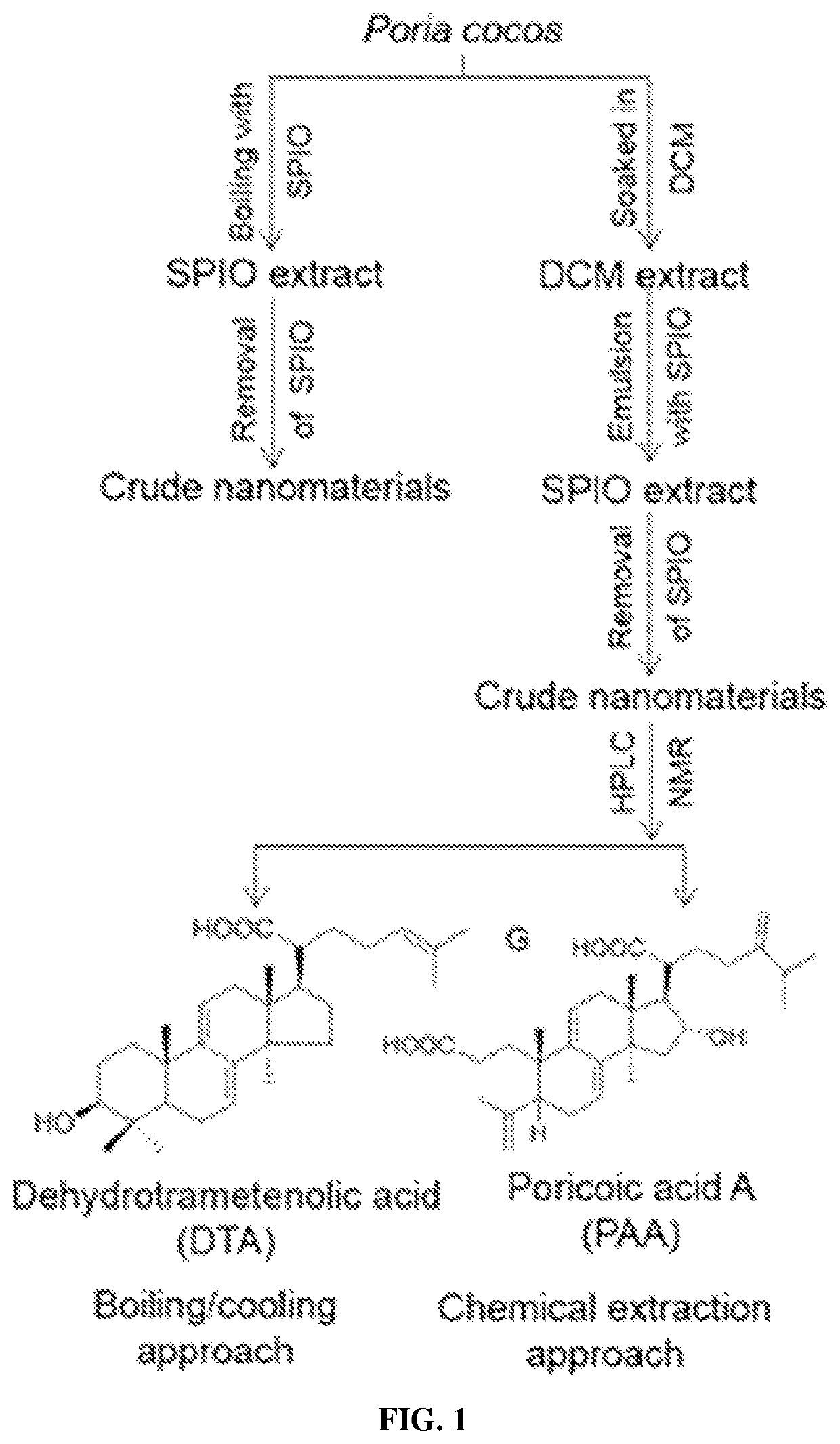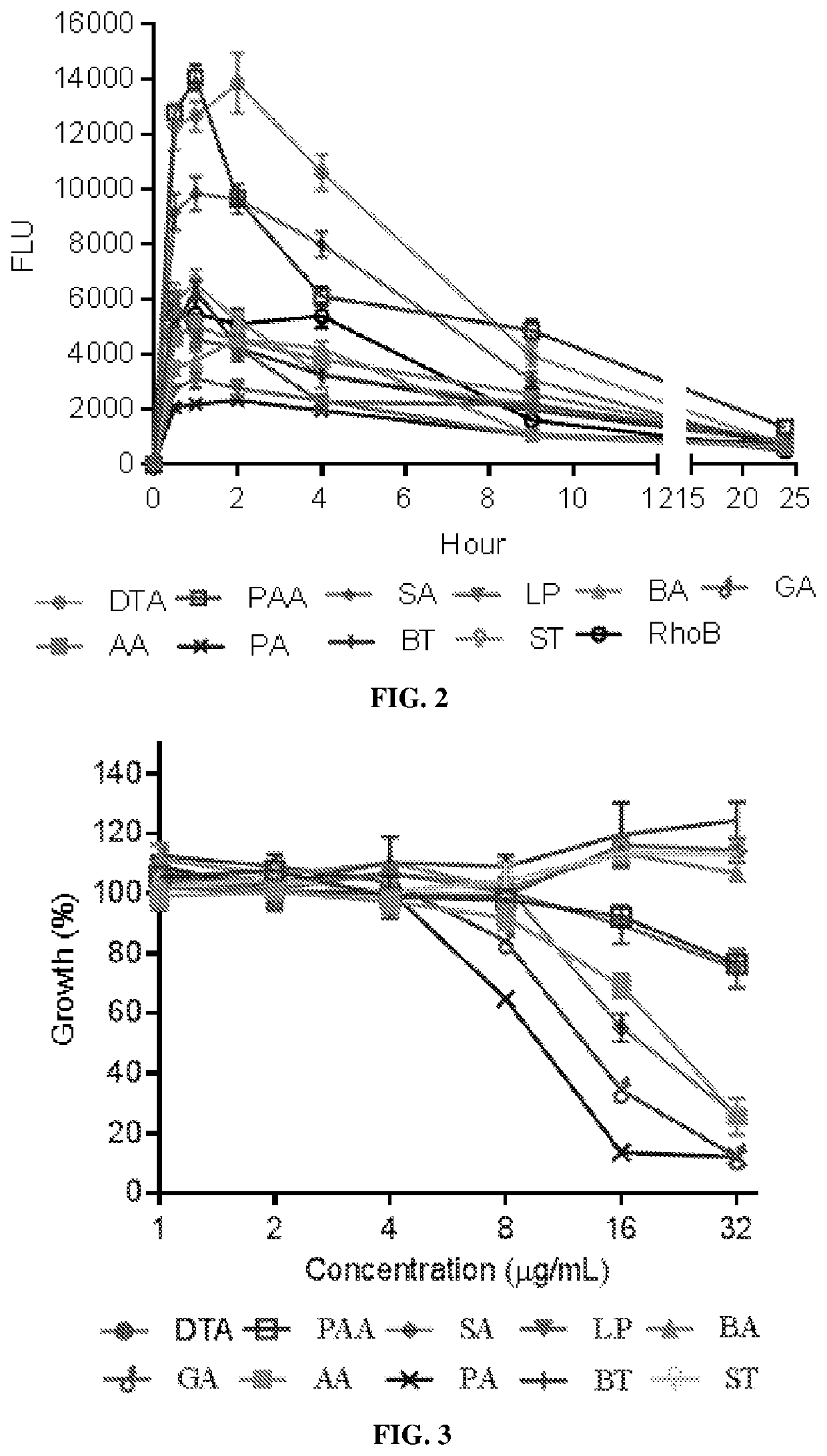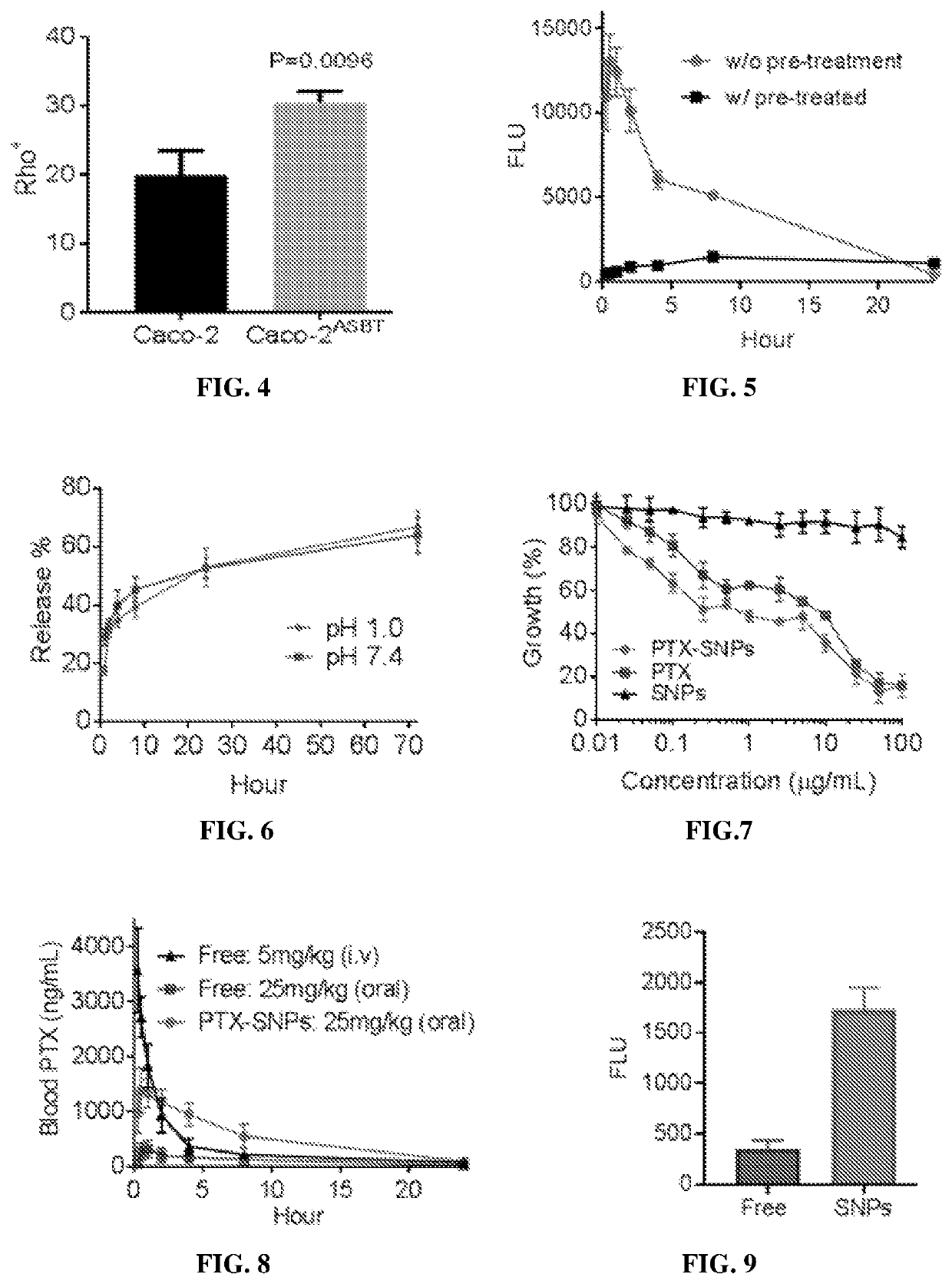Nanomaterials with enhanced drug delivery efficiency
a technology of nanomaterials and drugs, applied in the direction of drug compositions, peptide/protein ingredients, metabolic disorders, etc., can solve the problems of poor retention and distribution of therapeutics before the epithelial surface, challenge the chemical stability and bioactivity of orally administered agents, and metabolic proteases, so as to enhance the bioavailability of pharmacologically active agents.
- Summary
- Abstract
- Description
- Claims
- Application Information
AI Technical Summary
Benefits of technology
Problems solved by technology
Method used
Image
Examples
example 2
ation and Isolation of Nanomaterials from Other Medicinal Natural Products (MNPs)
[0276]To identify functional nanomaterials from MNPs, chemical extraction approach was employed in the screening of 67 additional MNPs.
[0277]In total, five classes of nanomaterials were identified including:[0278](1) diterpene resin acids, such as abietic acid (AA) and pimaric acid (PA);[0279](2) phytosterols, such as stigmasterol (ST) and β-sitosterol (BT);[0280](3) lupane-type pentacyclic triterpenes, such as lupeol (LP) and betulinic acid (BA);[0281](4) oleanane type pentacyclic tritepenes, such as glycyrrhetic acid (GA) and sumaresinolic acid (SA);[0282](5) lanostane-type triterpenes and derivatives, such as dehydrotrametenolic acid (DTA) and poricoic acid A (PAA) in Example 1.
[0283]Table 1 summarizes properties of supramolecular nanoparticles formed from these compounds isolated from different medicinal natural products. Among them, LP, GA, SA, PA, and AA formed spherical supramolecular nanoparticl...
example 3
Bioavailability of Agents Delivered Via Supramolecular Nanoparticles; and Toxicity Study of Supramolecular Nanoparticles
[0286]Materials and Methods
[0287]Bioavailability of Delivered Agent
[0288]Rhodamine B-loaded supramolecular nanoparticles (SNPs) based on the identified compounds in Example 2 were prepared via the chemical extraction approach as described in Example 1. These SNPs were administered to mice via oral gavage. The oral bioavailability of SNPs was determined by quantifying the fluorescence of rhodamine B in the blood and calculated based on the area under the curve (AUC).
[0289]Toxicity of Supramolecular Nanoparticles
[0290]Toxicity of all the SNPs was evaluated using Caco-2 human intestinal cells. Caco-2 cells were purchased from American Type Culture Collection (ATCC, Rockville, Md., USA). Cells were grown in DMEM medium (Invitrogen) supplemented with 10% fetal bovine serum (FBS, Invitrogen), 100 units / mL penicillin, and 100 μg / mL streptomycin (Invitrogen) in a 37° C. in...
example 4
Dehydrotrametenolic Acid (DTA) Supramolecular Nanoparticles (SNPs) by Intestine was Mediated Via Apical Sodium-Dependent Bile Transporter
(1) Molecular Structural Basis for SNPs
[0296]The chemical structure of DTA SNPs were characterized using X-ray crystallography, X-ray diffraction (XRD), and 2-D Fourier transform infrared spectroscopy (FTIR) to study the molecular mechanisms of the formation of stable supramolecular nanoparticles.
[0297]To determine the molecular forces that maintain the structure of DTA SNPs, the structure of a single crystal of DTA was analyzed by X-ray crystallography. Crystallographic analysis showed that the DTA molecule was nearly planar and interacted in a slipped-stack geometry directed by the intermolecular C═O . . . O—H hydrogen bonding, H—O . . . H—O—H hydrogen bonding, CH . . . π interaction, C═C . . . HC interaction and CH . . . HC interaction, as shown in FIG. 18.
[0298]To reveal how DAT SNPs assembled, the X-ray diffraction (XRD) patterns of both bulk ...
PUM
| Property | Measurement | Unit |
|---|---|---|
| diameter | aaaaa | aaaaa |
| diameter | aaaaa | aaaaa |
| width | aaaaa | aaaaa |
Abstract
Description
Claims
Application Information
 Login to view more
Login to view more - R&D Engineer
- R&D Manager
- IP Professional
- Industry Leading Data Capabilities
- Powerful AI technology
- Patent DNA Extraction
Browse by: Latest US Patents, China's latest patents, Technical Efficacy Thesaurus, Application Domain, Technology Topic.
© 2024 PatSnap. All rights reserved.Legal|Privacy policy|Modern Slavery Act Transparency Statement|Sitemap



